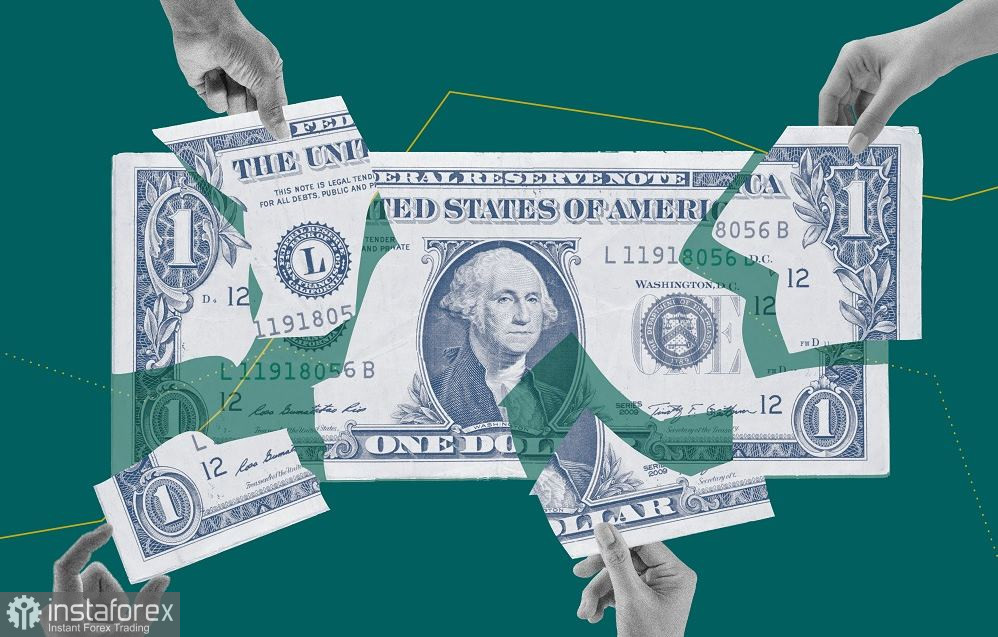The EUR/USD pair has been trading within the price range of 1.0960 – 1.1070 for two weeks. Bulls tried to test the 11th figure, bears attempted to pull the price into the area of the 8th figure, but, as they say, "the cart is still there." Interestingly, the pair could not leave the price range even under the influence of the Federal Reserve and the European Central Bank, which summed up the May meetings last week. Amid a contradictory fundamental picture, EUR/USD traders tried to avoid taking risks: they closed short positions when the pair was falling to the middle of the 9th figure and, accordingly, closed long positions at the border of the 11th figure. However, the situation may soon change dramatically – after all, key inflation data in the US will be published.
In anticipation of important reports
It is difficult to overestimate the importance of the upcoming inflation data. Here, it is necessary to refer to the Fed's last meeting, the results of which we learned last Wednesday. The results of the May meeting provided support for the dollar but were very short-lived. The central bank expectedly increased the interest rate by 25 basis points and made it clear that it is ready to tighten monetary policy further if necessary. Although the "base" scenario assumes maintaining the status quo at subsequent meetings.

By the way, the probability of maintaining the monetary policy parameters in their current form after the June meeting is now over 90% (according to the CME FedWatch Tool data). The skeptical sentiment of traders did not change even with the strong Nonfarm payrolls report. According to the data, the unemployment rate in April decreased to 3.4%, the number of employed in the non-agricultural sector increased by 253,000 (with a forecast of +170,000), and the average wage level rose by 4.4% (with a forecast of growth at 4.2%). All components of the report were in the "green", exceeding forecast estimates.
However, strong Nonfarm payrolls did not help the greenback. Nor did the Fed members who left the door open for further rate hikes. Because the fate of the rate now depends mainly on inflation dynamics. In the role of a "black swan," we might hear of another bank collapse in the US, but if we talk about the importance of macro data (in the context of monetary policy prospects), inflation is undoubtedly in the first place.
The Fed has effectively "tied" the fate of the rate to inflation growth dynamics. At the same time, Fed members made it clear that the base scenario is to maintain the pause. But if inflation indicators do start to gain momentum, the issue of raising the rate will be back on the agenda.
That is why inflation reports to be published this week may provoke strong volatility among dollar pairs. And the EUR/USD pair will not be an exception here.
CPI, PPI, PCE
The most significant of the upcoming inflation reports is the Consumer Price Index (CPI) growth report, which will be published on Wednesday, May 10. According to preliminary forecasts, both the overall and core CPI will reflect a slowdown in April inflation. Thus, according to most experts, the overall CPI will be at 4.9%. In this case, the indicator will show a downtrend for the tenth (!) straight month. The market will particularly focus on the core index, excluding food and energy prices. Here, a decline in the indicator is also expected – both in annual and monthly terms. In particular, in annual terms, the core CPI should be at 5.5%. I recall that last month this indicator showed an uptrend after a five-month consecutive decline. If, contrary to forecasts, the core index accelerates again, the greenback will strengthen its positions across the market.
Also this week, the Producer Price Index (PPI) report will be published (Thursday, May 11). This indicator signals changes in inflation trends or confirms certain tendencies. In this case, the PPI should serve as another confirmation of the slowdown in US inflation. According to most experts, the overall PPI will decrease to 2.5% YoY (declining for the 10th month in a row), and the core index will decrease to 3.3% (recording a consecutive decline over the last 13 months). But again - if the PPI comes out in the "green", the dollar will receive additional support. Although in the last two months, the PPI has been in the red, reflecting an active decline.
Another inflation report of the week is the import price index (Friday, May 12). Although this report is secondary, it can complement the existing fundamental picture. Especially since analysts predict a sharp decline in the index in annual terms - to -6.3% after the equally sharp decline in March to -4.6%.
Also on Friday, pay attention to the University of Michigan Consumer Sentiment Index. This indicator is an important leading indicator of future spending. The index is expected to show a downtrend (to 63.0) after rising in the previous month.
Conclusions
As we can see, according to preliminary forecasts, all inflation reports to be published in the upcoming week will reflect a slowdown in US inflation. If reports come out at the forecast level, the dollar will be under pressure, as the market's confidence that the Fed will take a wait-and-see stance – at least at the next two meetings – will grow. In this case, EUR/USD bulls will try to enter the area of the 11th figure again, overcoming the resistance level of 1.1090 (the upper Bollinger Bands line on the daily chart).
But if inflation surprises with its "green hue", then dollar bulls will be invigorated again. In this scenario, bears will try to move towards the base of the 9th figure with an attempt to test the support level of 1.0900 (the lower Bollinger Bands line on the D1 chart).





















